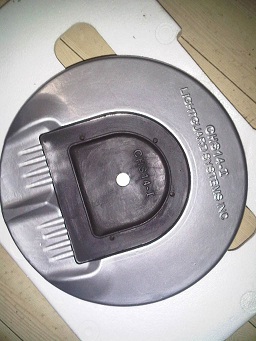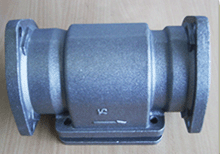Sand Casting Sourcing Services
Sand casting is one of the most versatile and cost-effective casting methods available, and Compass & Anvil can connect you with a manufacturer who can create parts to fit nearly any shape, size, or material requirement. With over 30 years of experience, we are experts when it comes to castings of any type. We work with an array of on and offshore manufacturers to guarantee all your demands are met.
Simple or complex. Finished or unfinished—No matter the application or requirements, Compass & Anvil has the connections and expertise to ensure you receive exactly what you need. We will work with your schedule, budget, and designs to determine the best solution for your custom project. Contact us today for more information or request a quote to begin discussing your sand casting needs.
Sand Casting for Precision Products
Precision sand casting, also known as sand molded casting, is one of the most widely used processes for forming complex metal components. Sand is a relatively inexpensive and readily available material to use for metal forming. Its resistance to high temperatures also makes it a valuable material to use in this process.
Not all sand is appropriate for use in the casting of metals, so the quality of the sand is judged based on its strength, permeability, thermal stability, collapsibility, and reusability.
Sand Casting Process
Sand casting traditionally includes six manufacturing steps:
- Making the mold – A specialized pattern is placed into packed sand to create two halves of a mold. The pattern is removed to reveal a cavity that will be used for the casting process.
- Clamping the mold – The two halves of the sand molds are prepared for casting and then clamped together with a gating system to produce a full mold cavity that is ready to receive the molten material.
- Pouring – Molten metal is quickly poured into the mold.
- Cooling – The molten metal begins cooling as soon as it enters the mold cavity. The casting must solidify completely before it can be removed from the mold.
- Removal – Once the casting has completely solidified, the mold can be broken away and the casting can be removed.
- Finishing – Once the casting has been removed from the mold, it is trimmed of excess material and may undergo finishing.
Precision Sand Casting Mold Types
There a several techniques that can be used to prepare the sand casting mold:
Green Sand Casting
A widely used option for sand casting because it is inexpensive and stable. Green sand casting uses molds that are a mixture of sand, water, and another binder (often clay).
Skin-Dried Sand Casting
Similar to green sand casting, the skin-dried casting process utilizes a mixture of sand, water, and binding agents. This process also requires the cavity surface to be dried.
Dry Sand Casting
Also referred to as cold box molding, this type of casting involves combining sand and an organic binder that is then baked in an oven.
No-Bake Casting
This casting process involves the use of sand and a liquid resin to create a mold that is allowed to harden at room temperature over a specified time.
Materials Used for Sand Cast Parts & Components
Sand casting offers an economical casting technique for manufacturing complex metal components. This process is compliant with several metal alloys, including:
- Steel
- Steel produces precision parts that are resistant to abrasion. Cost effective and easy to machine. Can be heat treated to improve its ductility.
- Commonly used to create parts for the mining, military, and industrial industries.
- Aluminum
- Lightweight with exceptional corrosion resistance. Has high electrical and thermal conductivity. Recyclable.
- Common applications include rods, engine bearings, hydraulic pumps, and a variety of other components for the automotive and industrial industries.
- Magnesium
- Nearly 33% lighter than aluminum. Provides high electrical and thermal conductivity and can withstand high temperatures.
- Ideal for aerospace components.
- Zinc
- Offers excellent stability and durability. Can adhere to close dimensional tolerances and achieve thinner wall sections.
- Used to create a variety of parts & components for the automotive and industrial industries, among others.
Let Us Find the Right Sand Casting Manufacturer for Your Project
Join the network of companies who rely on Compass & Anvil to simplify their product manufacturing needs. Compass & Anvil can connect you with experienced manufacturers to handle your sand casting project from start to finish. Our domestic and global partners work with all types of metals to produce castings using methods such as Die Casting, Investment Casting, Permanent Mold Casting, and Metal Prototypes. Contact us for more information or email us today to receive a no-obligation quote. We will get back to you within 3-7 business days to begin discussing your project requirements.





